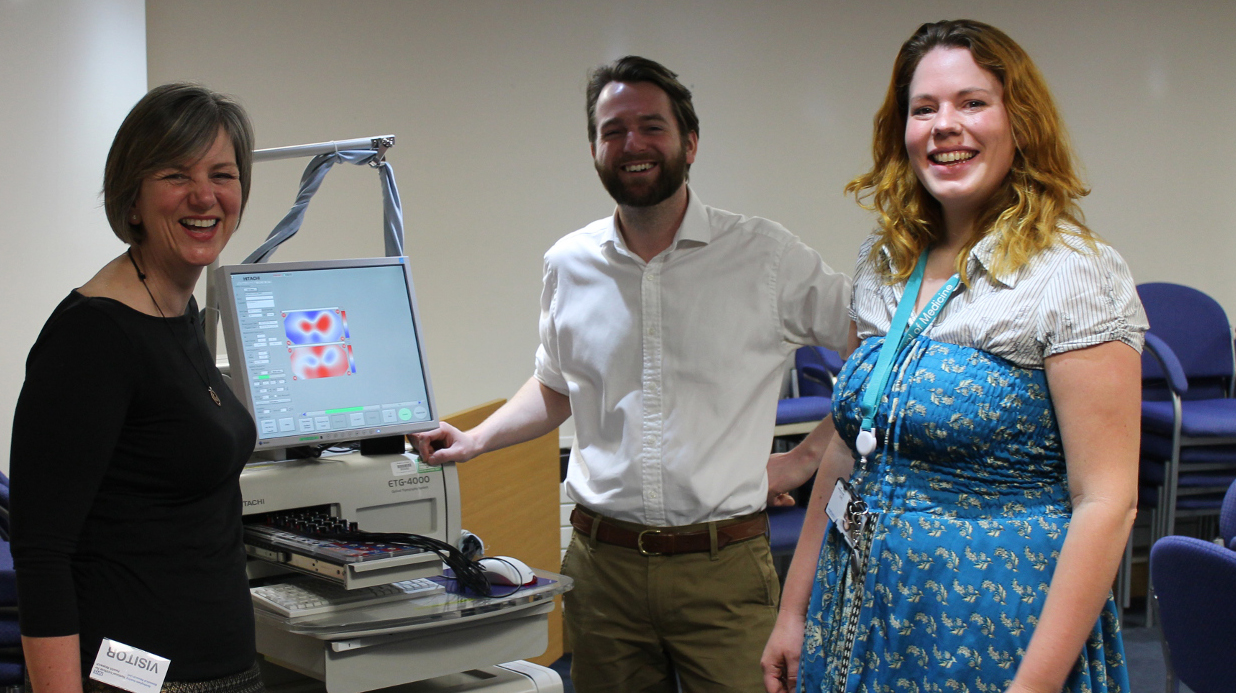
April 4, 2016, by Emma Rayner
Notts MP shadows our scientist for a day
Last November, Research Fellow in neuroimaging, Dr Rebecca Dewey, left her lab to spend a week at the House of Commons shadowing Notts MP Lilian Greenwood as part of a Royal Society Pairing Scheme. Now the MP has had her return match, by spending a day in the lab in Nottingham to see for herself the pioneering work being done in this field. In this blog, Dr Dewey explains why the scheme is worthwhile for both participants…
“Back in November, I spent a week shadowing Lilian Greenwood, MP for Nottingham South, on her busy schedule, including observing her give a speech at the UK Aviation Conference, attending meetings of the Shadow Transport Committee and witnessing the reading of the Comprehensive Spending Review and the Autumn Statement in the Commons Chamber.
“Then on Friday 1st April, Lilian came to the Nottingham Hearing BRU in Ropewalk House, where in the morning she met with scientists in the BRU to learn about research taking place within the department. Ms Greenwood met with Dr Ian Wiggins to hear about measuring neural plasticity with near-infrared spectroscopy, with Dr Pádraig Kitterick to discuss the health economics of interventional devices to treat hearing problems, and with Dr Jodie Davies-Thompson to learn about using functional magnetic resonance imaging to study sensory processing in the brain.
“In the afternoon, Lilian travelled onto campus to the Sir Peter Mansfield Magnetic Resonance Centre, part of the School of Physics and Astronomy. Here she met Professor Thomas Meersmann to learn about lung imaging with hyperpolarised noble gases, before observing Professor Sue Francis and I work on the magnetic resonance scanner to develop a protocol for my new research study. I’m investigating the phenomenon of ‘hidden’ hearing loss; where people report that they have difficulty hearing but do not have any clinically identifiable hearing deficit. We want to see how sounds are processed in the brainstem in people who have been exposed to loud noises in order to understand the association between noise exposure and this ‘hidden’ hearing loss. Lilian told me that she enjoyed the day and that she found it all really interesting. We also spent time over lunch discussing extra-curricular areas of the research lifestyle such as the peer review process and the pressure of applying for funding and finding a new contract.
“I would highly recommend the scheme to any research scientists at any stage of their career. It gave me a real insight into the constraints the government are under in terms of the short amount of time they have to get their head around a concept before sometimes making potentially life-changing policy decisions based on a scientist’s advice. It’s also a really great way to demonstrate to members of parliament and civil servants how research really works.”
Further information about the Royal Society pairing scheme, as well as case studies, can be found at the following link: http://royalsociety.org/training/pairing-scheme/. You can also visit http://royalsociety.org, follow the Royal Society on Twitter at http://twitter.com/royalsociety or on Facebook at http://www.facebook.com/theroyalsociety
No comments yet, fill out a comment to be the first

Leave a Reply